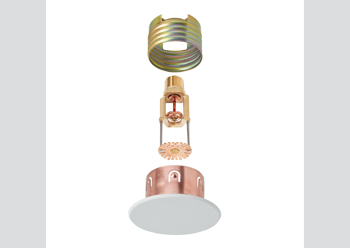
 Yehia ... building owners must consider all the risks in spaces they are responsible for.
Yehia ... building owners must consider all the risks in spaces they are responsible for.
Commercial building owners are all having to think about how they are going to use their space to keep both employees and the public safe. At least for the short and possibly medium or long term, we are having to plan how social distancing will work in practice. For many, this means we need to change both the layout and how people move through the space.
Most local regulatory bodies state that if you make an alteration to the property then you must reassess your current fire risk assessment. As a result of building layout changes, including many temporary internal and external structures such as protective barriers and screens, you need to think about fire detection and alarm, exit signage and emergency lighting layout.
Increased risk
At the moment, most changes to a building are happening so that we can minimise the risk from Covid-19, but unfortunately, while the steps we take may achieve this, in some cases we are increasing the risk from another hazard – fire. And it’s a serious risk for the people inside the building and also for the owner who does not consider it.
And when you stop and think about it, a lot of the measures put in place to protect us against Covid-19 will affect fire safety.
Escape routes
Take a look at retail and hospitality outlets, for example. Most have organised one-way traffic through their premises either with arrows showing direction of travel or, in some cases, by blocking off passages with barriers, rope or tape. If there is an emergency where the building needs evacuating, this could lead to doubt and confusion and may even prevent people from easily making their way to emergency exits.
This will have implications for emergency lighting and exit signage – some of which may now be in the wrong place for simple and safe evacuation. You should also check that there are fire extinguishers on each of these new escape routes.
Warning segregated people
If you are constructing new rooms, partitioning off areas or changing the layout to segregate people, you need to check that there are fire detectors installed in each new space and that people can hear and/or see fire alarms when they are in them and that they are still compliant.
Some of these partitions will also cause a fire safety hazard, whether it’s because they create a tunnel that funnels smoke or, in many cases, because they are plastic, which would create a lot of smoke if there was a fire. Such partitions may also alter the effectiveness of sprinkler systems.
Going back to the retail and hospitality outlets example, many of the check-out areas are partitioned off with a temporary structure of wood and clear plastic or Perspex to keep people separated from each other, yet these checkouts are generally near the exits. If the worst were to happen and a fire broke out, then you could potentially be blocking or inhibiting one route of evacuation, and if this structure were to catch fire, it would create thick and toxic smoke.
Risk assessment
While we need to implement many of these measures as we return to work, it is still the duty of building owners and employers to consider all the risks that employees and the public may face in the spaces that they are responsible for. It means that they may need to adapt or change the fire safety systems so that the risk from these new measures can be mitigated.
It may also require them to consider some of the choices they make. So, for example, they might consider what materials to use for constructing partitions.
A well-designed fire safety system will have 20 per cent extra capacity and allow some flexibility within its system but, sadly, most do not and even those that do will not have considered the extent of change that we need to make to our buildings.
Planning fire safety
For new-build and refurbishment projects, it is sensible to plan fire safety systems with flexibility in mind. It is increasingly likely that we will need to make buildings more flexible and regularly change their use and layout in the future. Even if we don’t face another pandemic, the way that we work and spend our leisure is likely to change and adapt.
By specifying and installing fire safety systems with flexibility in mind, and considering adaptive evacuation technology, you are safeguarding the future of your building, yourself and, most importantly, the people inside. If we make buildings more adaptable and modular, we need to do the same with all the elements of a fire safety system.
* Eaton is a power management company doing business in more than 175 countries. It provides sustainable solutions that help customers effectively manage electrical, hydraulic, and mechanical power.





















_0001.jpg)


.jpg)
















.jpg)








.jpg)




